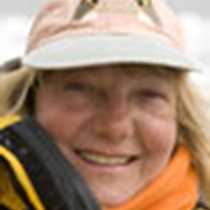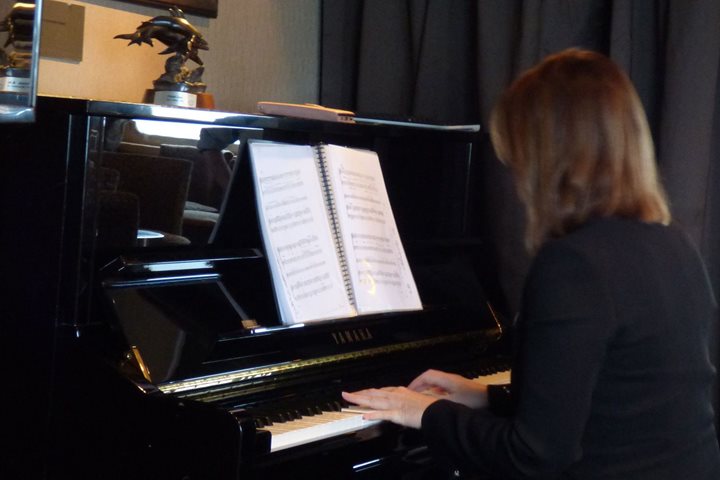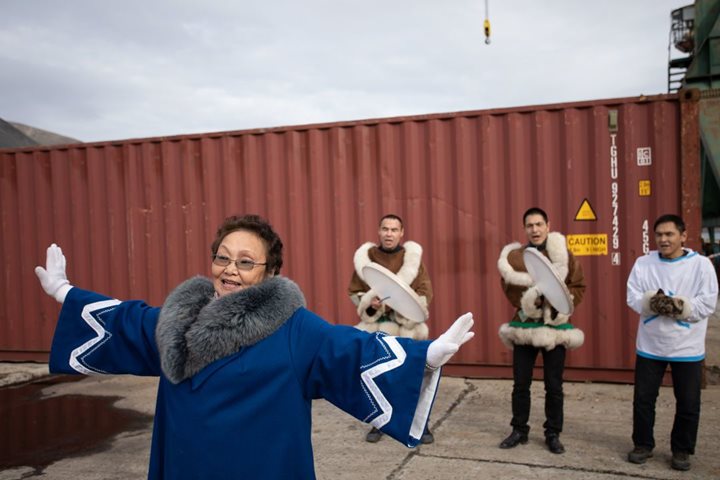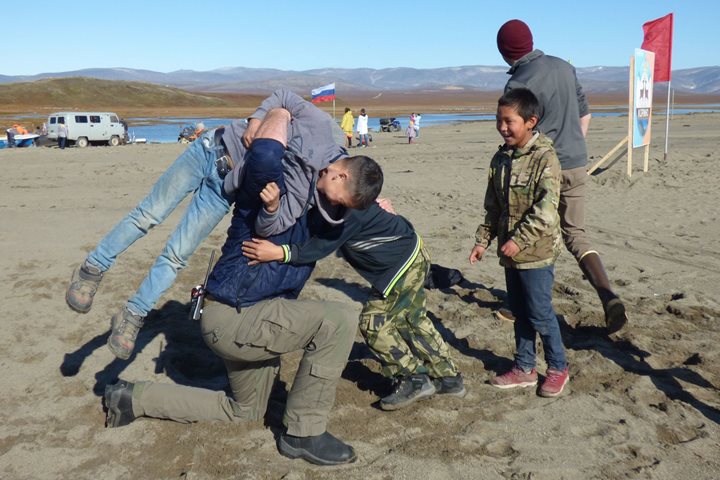The vibrant tangerine orb of the rising Arctic sun announced that our day would be clear and cloudless, affording us views of the wild landscape of Wrangel Island. National Geographic Orion had made a calm passage overnight, shifting to the western coast of the island where we hoped to Zodiac beneath nesting bird cliff citadels.
Upon reaching the cliffs it was immediately obvious that our lofty plans for the morning would have to be reconfigured. The seabird nesting area was evidenced by enormous flocks of black-legged kittiwakes blowing in the wind like so much confetti over the roiling ocean. Other species observed were thick-billed murres, black guillemots, and the occasional horned puffin. In addition to the seabirds, were the family parties of lesser snow geese beginning their southwards migration to Alaska which would take them further south to California.
A headcount of polar bears scattered across the tops of the cliffs down to the beachheads revealed at least 50 bears, and this all during breakfast! It was easy to understand why Wrangel is considered one the most important onshore denning area for polar bears in the circumpolar Arctic.
The mist-shrouded outline of the various capes or points (Mys) stretched before us to starboard as the ship made its way northwards: Mys Zapadnyy, Mys Prichiy, and Mys Florens.
It was the power of nature, however, that completely overwhelmed us. Katabatic winds, roaring from the lofty promontories, pummeled the sea creating “williwaws.” Dancing waterspouts rose skyward in twirling and whirling masses of salty spray, seemingly everywhere.
Captain Oliver Kruess announced that we should be careful out on decks as the winds were in excess of 50 knots hour. His prediction was exceeded by the fact that we experienced several gusts of some 80 knots. We stood out on decks, bracing ourselves against the onslaught of the wind. Venture onto the deck without headwear and you were certain to have a bad hair day, your coif blown off to the heavens.
After all the excitement outside we warmed ourselves with hot beverages, then assembled in the lounge for a presentation by the two Wrangel rangers. Researcher, Uliyana Babiy, interpreted for Vladimir Mazanov who explained his role as one of the seven rangers who live on the island, for the most part year-round. Uliyana next interpreted for Igor Oleynikov’s wonderful visual presentation about life on Wrangel Island.
Throughout lunch the wind continued to bellow, easing off to a sustained 40 knots/hour. Because Wrangel is highly restricted as to where visitors can go and the permitting required, changing landing sites that might better suit us was not necessarily an option.
It was early afternoon when Jimmy and the Captain decided to “test the waters” and send out a scout boat with hardy members of staff to survey the possibility of making a landing at Komsomol. Immediately upon setting off from the stern platform the “scouting” Zodiac took wave after wave over the bow, completely dousing the staff. It took only about a minute before the Zodiac made an abrupt 180-degree turn to return to the ship. All in the Zodiac were thoroughly soaked but in true expeditionary form all were laughing.
To continue the educational program, we attended Kevin Clement’s lecture on the past – the distant past – when wooly mammoths roamed the earth and Wrangell. Kevin had barely concluded when Jimmy announced over the PA system that we would be taking the Zodiacs into Laguna Nanauna to look for bears. We geared up and got on our waterproof clothing for the ride to shore where we were managed to count more than a dozen bears. The shoreline had a rocky bench with a lagoon behind in which the bears may have been feeding on small fish.
It was an amazing day filled with excitement, bears, and Arctic experiences – the type of experiences that most people only read about in National Geographic. We surely were some of the most fortunate people on the planet.









